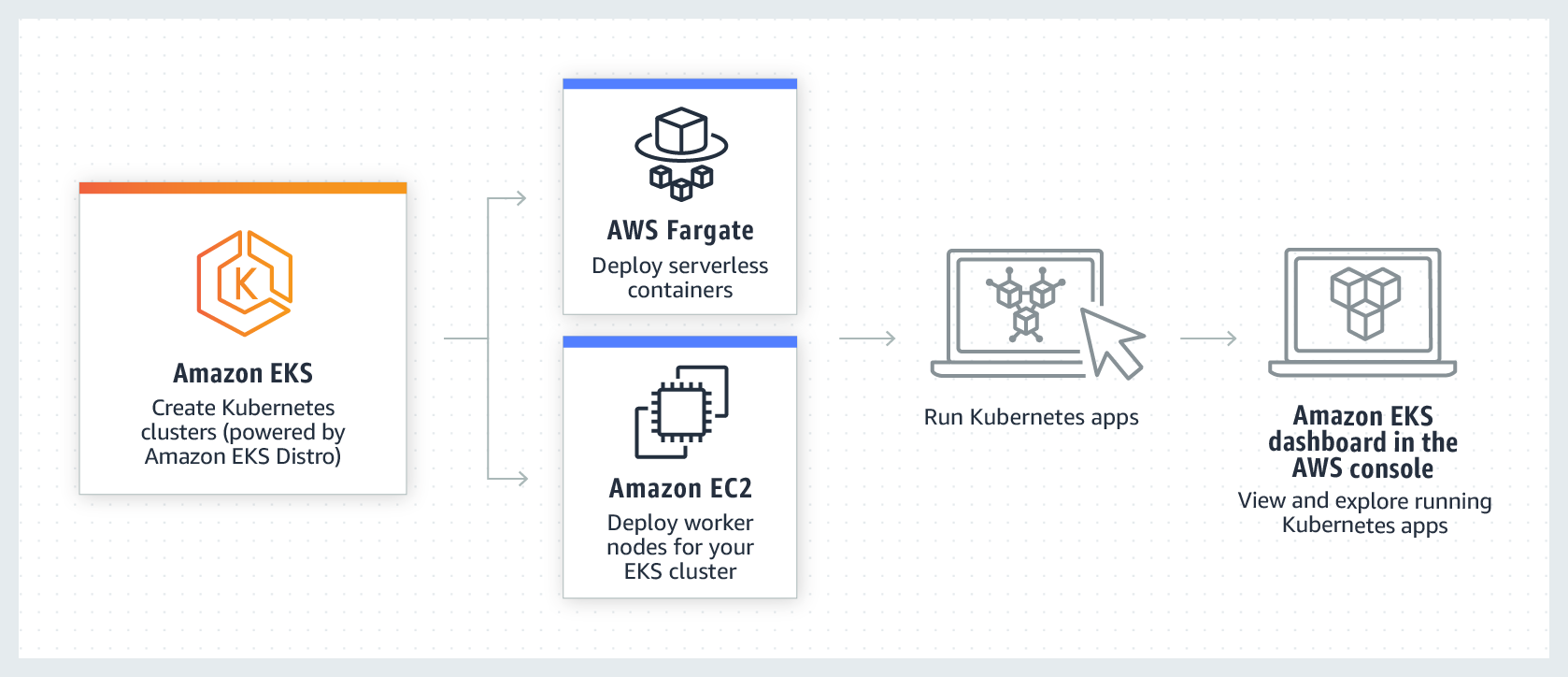What is Amazon EKS?
Amazon Elastic Kubernetes Service (Amazon EKS) is a managed service that eliminates the need to install, operate, and
maintain your own Kubernetes control plane on Amazon Web Services (AWS). Kubernetes
Features of Amazon EKS
The following are key features of Amazon EKS:
- Secure networking and authentication
-
Amazon EKS integrates your Kubernetes workloads with AWS networking and security services. It also integrates with AWS Identity and Access Management (IAM) to provide authentication for your Kubernetes clusters.
- Easy cluster scaling
-
Amazon EKS enables you to scale your Kubernetes clusters up and down easily based on the demand of your workloads. Amazon EKS supports horizontal Pod autoscaling based on CPU or custom metrics, and cluster autoscaling based on the demand of the entire workload.
- Managed Kubernetes experience
-
You can make changes to your Kubernetes clusters using
eksctl, AWS Command Line Interface (AWS CLI) , the API, kubectl, and Terraform . - High availability
-
Amazon EKS provides high availability for your control plane across multiple Availability Zones.
- Integration with AWS services
-
Amazon EKS integrates with other AWS services, providing a comprehensive platform for deploying and managing your containerized applications. You can also more easily troubleshoot your Kubernetes workloads with various observability tools.
For details about other features of Amazon EKS, see Amazon EKS features
Get started with Amazon EKS
To create your first cluster and its associated resources, see Getting started with Amazon EKS. In general, getting started with Amazon EKS involves the following steps.
-
Create a cluster – Start by creating your cluster using
eksctl, AWS Management Console, AWS CLI, or one of the AWS SDKs. -
Choose your approach to compute resources – Decide between AWS Fargate, Karpenter, managed node groups, and self-managed nodes.
-
Setup – Set up the necessary controllers, drivers, and services.
-
Deploy workloads – Tailor your Kubernetes workloads to best utilize the resources and capabilities of your chosen node type.
-
Management – Oversee your workloads, integrating AWS services to streamline operations and enhance workload performance. You can view information about your workloads using the AWS Management Console.
The following diagram shows a basic flow of running Amazon EKS in the cloud. To learn about other Kubernetes deployment options, see Deployment options.

Pricing for Amazon EKS
An Amazon EKS cluster consists of a control plane and the Amazon Elastic Compute Cloud
- On-Demand Instances
-
Pay for the instances that you use by the second, with no long-term commitments or upfront payments. For more information, see Amazon EC2 On-Demand Pricing
and AWS Fargate Pricing . - Savings Plans
-
You can reduce your costs by making a commitment to a consistent amount of usage, in USD per hour, for a term of one or three years. For more information, see Pricing with Savings Plans
.